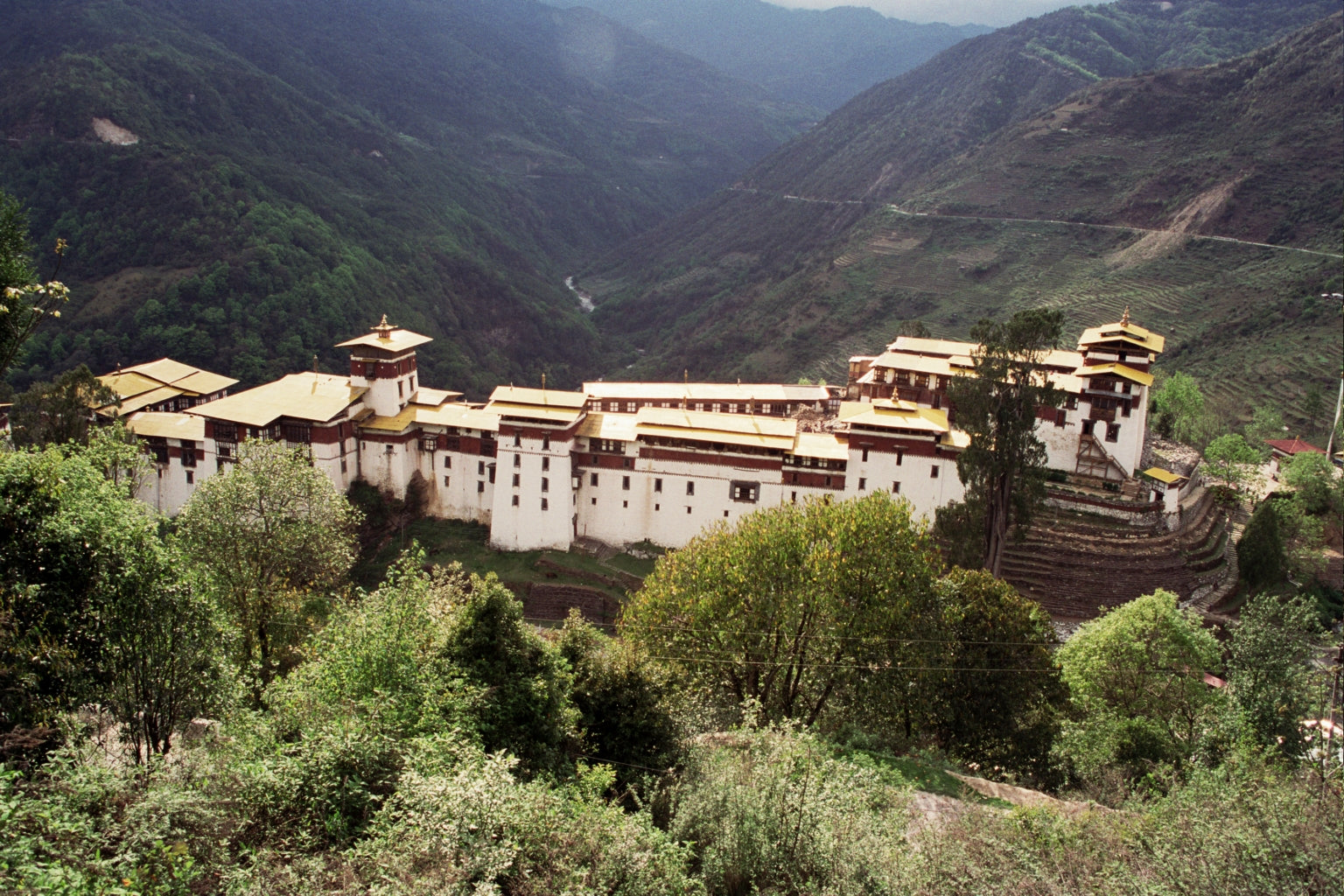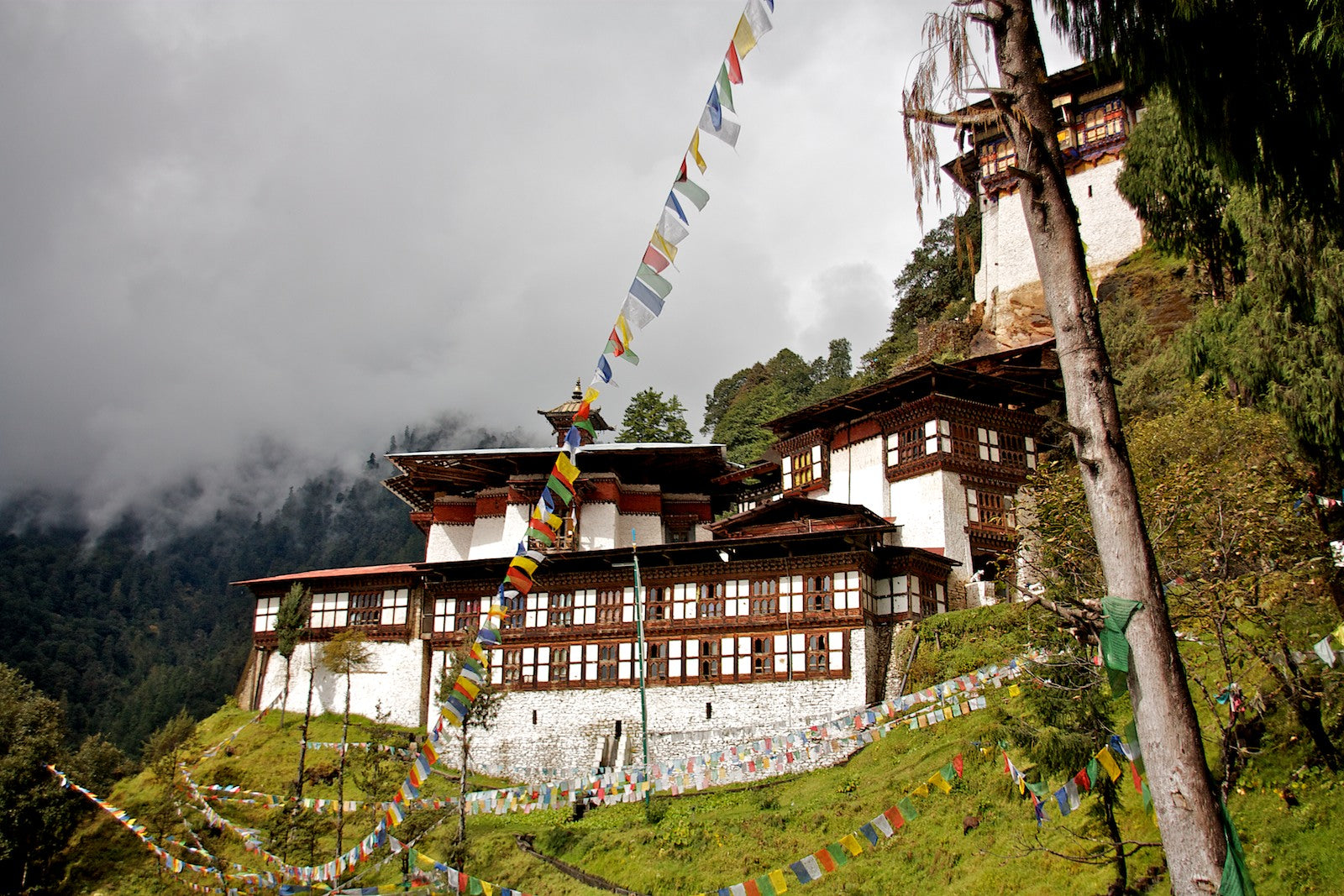Bhutan is a small country hidden among the Himalaya mountains, realm of progressive policies and home to some of the world’s oldest and most imposing buildings. The location of its temples seems to defy gravity and is testimony of the will of this nation.
Bhutan is a country located in the Himalaya Mountain Range, bordering with China and India. It is the only country committed to remain as a negative carbon footprint nation and to preserve 60% of its territory covered by forests. The Bhutanese government has its own social wellness indicator, the Gross National Happiness, whose relevance is equal or greater than the Gross Domestic Product. Its architecture holds centuries worth of history and Buddhist traditions, it has become an important tourist destination, due to its synergy with the landscape.

The architectural style that predominates in Bhutan can be appreciated in dzongs and goembas, monumental constructions built on cliffs. In addition to the rugged topography of the mountain range, these buildings were established at the top for political and religious reasons. Dzongs share religious and political operations, Buddhist temples and military forts, reason why their location must be strategically chosen for defense. Goembas -monasteries- are settled away from the society, offering monks the opportunity to retreat in order to find serenity. The most distinctive feature of these buildings is their designing process, since they are built without architectural plans. Even today, lamas or monks in charge of the construction determine the distribution and dimensions as the work progresses.
The most representative features of dzongs and goembas is the use of wood and rammed earth walls. Traditionally, Bhutan’s historical buildings do not have nails or metal pieces, unions were made using wood. Tile roofs with golden details are special for administrative or religious buildings. A detail that contributes to the monumental effect and structural resistance is wall inclination, a technique known to be part of Tibetan vernacular architecture. Even though traditional architectural plans are not available, each building has a design that has allowed for them to carry out their operation, adapting to the surroundings.
Taksang Goemba
This monastery is known among people as Tiger’s Nest due to the mythology around its origin. The legend of the temple speaks about the arrival of guru Padma Sambhava on the back of a tigress in the Paro Valley, where he found a cave and meditated for years. The introduction of Buddhism in Bhutan is attributed to guru Padma Sambhava, reason why the temple was built in his name in the 17th century. The road to reach the monastery is 12 km long, from the city of Paro, it can only be traveled on foot or by horse. Its altitude is 3200 above sea level in a cliff 800 meters from the base of the valley. The compound is formed by four temples and eight caves connected through stone paths.

Trongsa Dzong
Located in the Trongsa District, this is Bhutan’s largest dzong. The religious area of the compound was built in 1543, the administrative buildings were added in the following centuries. Its location in the central area of the valley above the Mangde River offers this fortress a strategic panoramic view for military defense and control of the central region. The buildings, unlike other dzongs, feature watchtowers which were also used as dungeons or weapon storage areas.

Chagri Dorjeden
The Chagri monastery is located in the Thimphu Valley, Bhutan’s capital. It was established in 1620 by Ngawang Namgyal, religious and political leader who unified the country. Today, it is the most important learning and retreat center of Buddhism’s Drupka branch. It was built 900 meters above the base of the valley and reaching it takes around one hour long.
Tango Dzong
In Bhutanese, the word tango means “horse head”, the monastery bears this name due to the iconography of deity Hayagriva. The legend of this place says that the figure of divinity emerged from stone. It is built around a series of caves formerly used for meditation. It has six temples and a courtyard.

Gasa Dzong
The Gasa Dzong was built in mid 17th century, in commemoration of the victories over the Tibetans. Its location, near the northeastern border of the country was an important defense spot in the following centuries. The architecture of the fortress is peculiar for its circular shape and its three watchtowers distributed along the perimeter. The building is surrounded by mountains, whose elevations go from 1500 to 4500 meters, during the tour, the peaks of Mount Gangboom can be appreciated in the background, turning the ascent into a spectacle.



